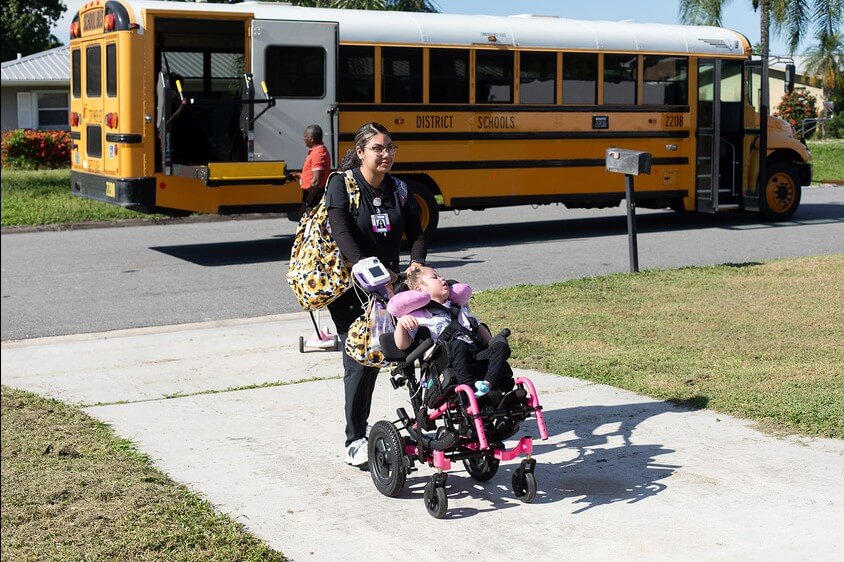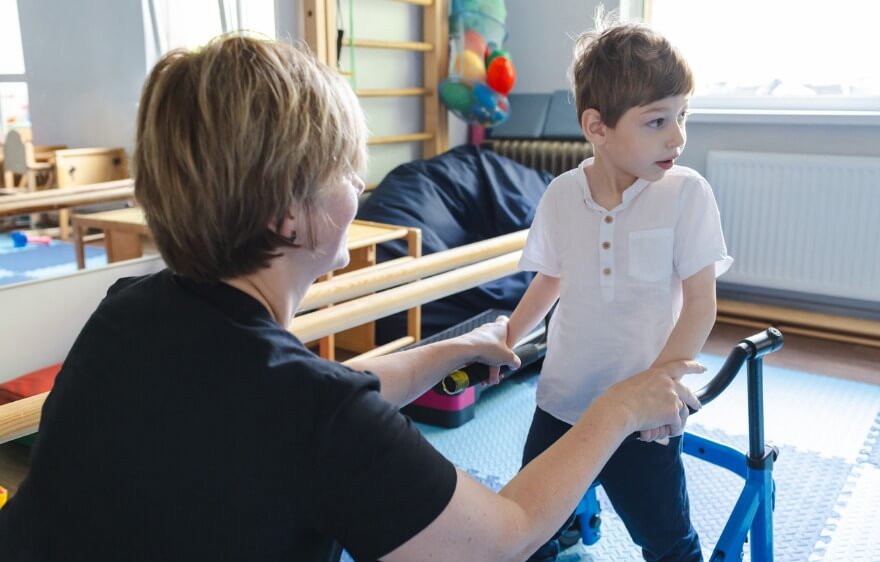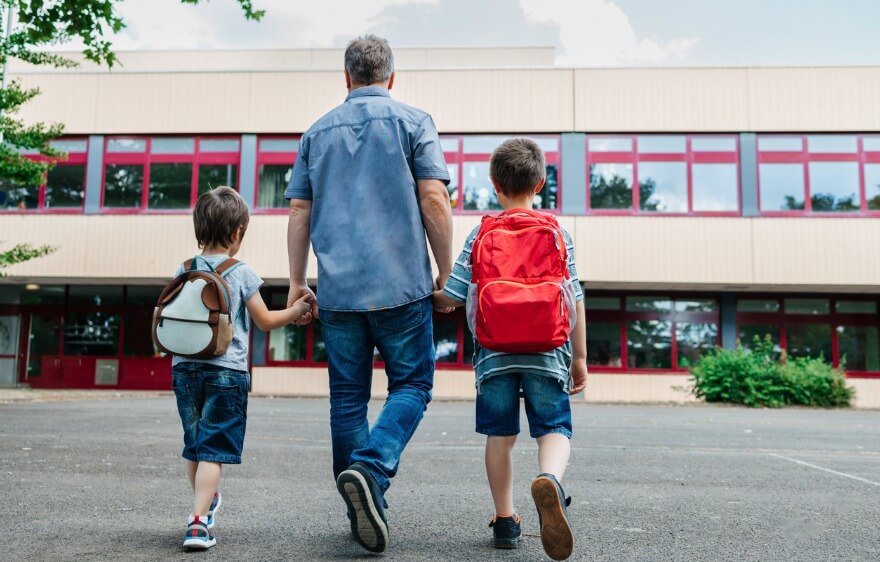The job of a speech-language pathologist in the schools is not to “cure” speech and language disorders. This White Paper will outline the objectives of speech services in the schools.
SLPs Don’t “Cure” Language Problems
Speech-language pathologists can address a variety of language-learning targets during direct service in schools. However, direct therapy for language skills has three global objectives.
Special education law does not mandate schools “cure” students of their speech and/or language disability. The expectation is that service to students with an identified communication disability will be to ensure students receive the support necessary to mitigate the impact of their disability. Traditional methods of classroom help are insufficient to support students. These students require specially designed instruction to compensate for challenges posed by their disability in an educational setting.
Although speech pathologists often use standardized assessment tools as a part of an evaluation to determine if students have a disability, the goal of the service is not to improve standardized test scores over a period of time. Many school administrators are unclear of expectations for speech and language therapy.
3 Objectives Of Direct Service In The Schools
This White Paper outlines three global objectives speech pathologists utilize when providing service to students with disabilities within schools.
Objective 1: Identifying How Students Think
An evaluation for special education serves two purposes for a speech pathologist (SLP). One, an evaluation can provide a comparison of educational performance between a student being evaluated and typically developing peers. Two, an evaluation can identify speech, language, and/or communication areas in which students are atypical in their development. For students that qualify, these differences in development manifest as educational difficulties.
Following an evaluation in which a child qualifies for services, intervention to support speech and/or language needs is based, in part, on atypical development identified during testing. The SLP understands that language development is the basis for thinking skills. When a typical development is sufficiently problematic to create an educational impact for the child, the SLP understands the child’s thinking is compromised. Thinking skills are the building blocks of learning in schools. Speech and language skills are the building blocks for thinking skills.
For example, if a young student does not know how to categorize objects, the student will not be able to compare and contrast components of literature, understand differentiating mathematical concepts, or compare branches of government in future grades. The SLP probes to determine where breakdowns occur. Can this young child categorize objects based on color, size, shape, or function? Are there patterns of categorization that are more typical in nature? As the SLP becomes familiar with how a child is processing information, he or she then provides insight as to how intervention could be implemented.
A clinician’s prognosis for growth is often based on professional observations of how students think and the level of support needed to influence their thinking patterns at the time of evaluation.
Objective 2: Identifying Strategies Effective to Facilitate Growth
Much of a school-based SLP’s time is spent with students identifying what strategies students need to “learn” a desired speech and/or language objective. Providing children with exposure to new vocabulary or repeating academic content numerous times, as practiced in general education, is insufficient to address compromised areas impacting school performance. If these measures were sufficient, students would have mastered classroom instruction alongside their peers.
Specially designed instruction by the SLP requires the clinician to probe multiple approaches to a language target (Objective 2) based on how processing is breaking down for the student (Objective 1).
Working memory (note: FWM below references functional working memory) is a good example of an area the SLP must be thoughtful of when identifying language intervention. Boudreau & Constanza-Smith (2011) explain it well: “For children who are experiencing classroom difficulties with following complex directions, oral or reading comprehension, or completing tasks that require completion of mental operations (e.g., word/story problems, math equations performed mentally), an assessment of FWM may provide some insight into these challenges. Measures of FWM are designed to evaluate how much information children can maintain in storage while they simultaneously perform processing operations (Baddeley & Hitch, 2000; Hitch, Towse, & Hutton, 2001).”
The SLP is responsible for identifying how to address a student’s language learning challenges. The SLP may work individually with a student and/or within a small group to address strategy and skill development. Once a student’s best learning is identified, the SLP should collaborate with the classroom teacher to support the generalization of best instructional practices for the student. The SLP can also support the teacher by reviewing curriculum and teaching approaches to identify where and when a student’s language-learning challenge may manifest.
Objective 3: Metacognitive Skill Development (aKA teaching students to understand their own thinking patterns)
The ultimate goal of a school-based SLP working with a student with language-learning challenges is to support the student to the extent that the student may be independently successful within their general education setting. This goal requires students to ultimately come to understand their own thinking and language processing skills. More importantly, students need to learn how to generalize their compensatory strategies to their general education environment.
The SLP works on metacognitive development with students in various ways, depending on their needs. The SLP may address task analysis, language content, processing strategies, and/or self-advocacy with a student. Once students can identify how and when information is breaking down for them and understand what strategies they need to implement to support themselves within their general education setting, the SLP may consider dismissing the student from services.
Conclusion
This paper outlines a school-based SLP’s three global objectives when working with a student with language-learning disabilities. An SLP first wants to address how students process information and how it breaks down within their thinking. Much of this is completed during the assessment for special education eligibility. However, this effort will often continue once a student begins intervention as the SLP best determines the student’s needs.
Second, the SLP wants to identify what strategies are most effective in facilitating growth for a student based on how information is breaking down for them. Strategies for comprehension and expression will vary depending on the student’s skill set.
Finally, the SLP wants students to develop metacognitive skills, or, more plainly put, a better understanding of their own thinking so they can identify when information is breaking down and how to help themselves within the general education curriculum.





